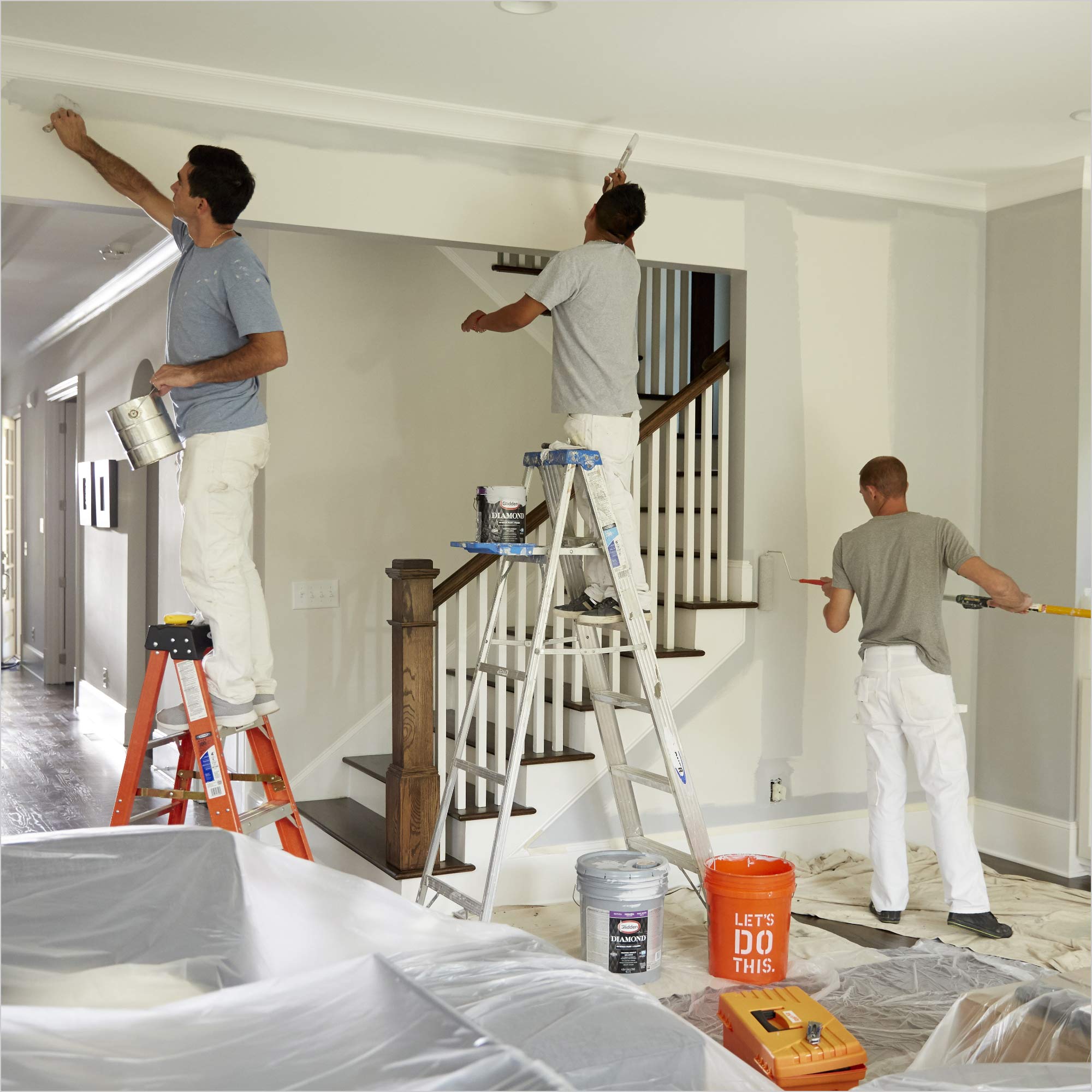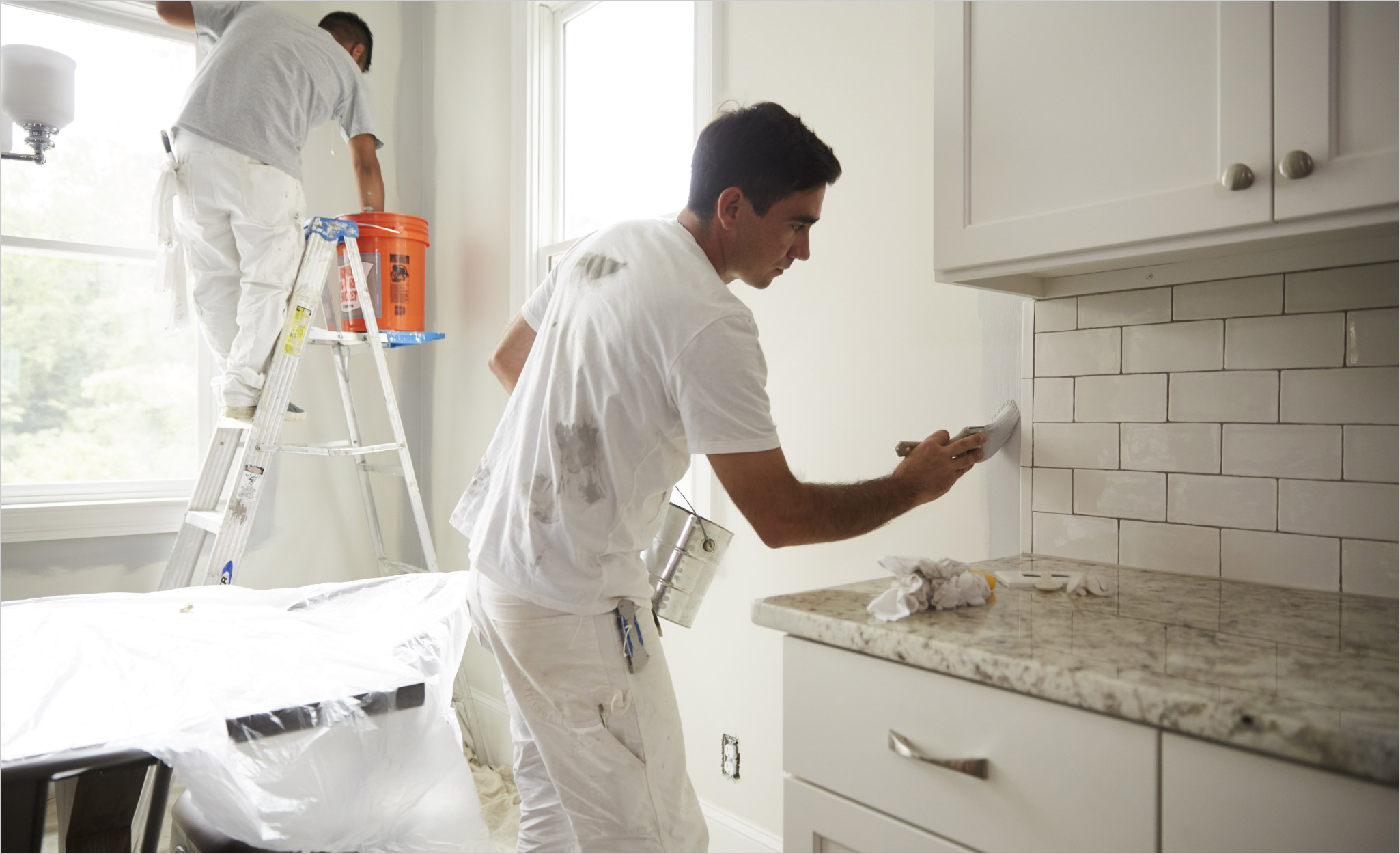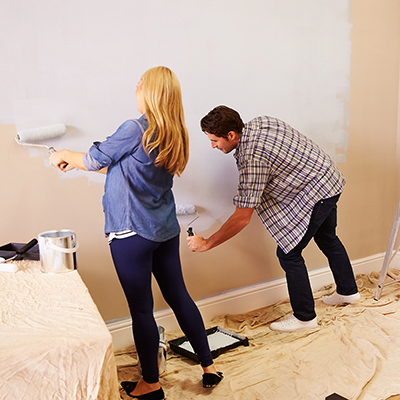How to Make a Winning Bid on a Paint Job

Last updated August 12, 2024
When you’re determining how to make a winning bid on a paint job, the decision may not be black and white. Bid too high and you risk pricing yourself out of the job. Bid too low, and you may get the job at the expense of your profit margin.
This guide reviews how to bid on a paint job by accurately estimating paint, labor, overhead and profits.
Difficulty:
Intermediate
Duration:
2-4 hours
Table of Contents
How to Inspect a Site Before a Paint Job
How Much to Charge to Paint a Room
Tips for How to Estimate a Paint Job
More Tools. More Products. More Perks.
How to Inspect a Site Before a Paint Job

Bidding on a paint job begins with inspecting the site to measure the walls and find any damage or other problem areas. Use the square footage to find the amount of paint and other materials you’ll need. Estimate the labor costs of the job and add your overhead and profit margin to the final estimate.
Never bid on a job sight unseen. Even if the customer can offer floor plans, digital photos and precise measurements of the square footage, you need to see the location and get the lay of the land before you can make an accurate bid.
Site inspections can reveal challenges that make a paint job more complicated or time-consuming, possibly increasing your bid. When inspecting an interior or exterior, make the following determinations:
- What type of siding or finish does the exterior have? It may require different types of paint or preparation.
- Are there obstructions or other inconveniences? The exterior could have ivy on the walls, trees or shrubs blocking the way or uneven terrain that can make placing step ladders unsafe.
- Are there unusual or challenging design features? For example, embossed windows take longer to paint than standard windows.
- How old or damaged are the walls? Painters often make minor repairs to walls, like spackling nail holes or removing old paint. Check the walls for damaged wood, peeling paint or other imperfections that can increase your prep time.
Whether painting the exterior, interior or both, determine the square footage.
- Use a laser distance measure to quickly and accurately record the width and height of the walls.
- Calculate the square footage of the walls, deducting any windows or doors to find the total paint coverage area.
- Separately measure and determine the coverage area of the ceiling, doors, closets, trim and other features as required by the job. These can take more time or require different types of paint than the walls.
Some painters charge in a range of $1.50-$3.50 per square foot, so a room of 2,000 square feet would cost $3,000-$7,000. There is no one-size-fits-all formula for paint estimates. Rates can vary based on the size and condition of the site, the experience level of your team, the labor market where you live and more.
Some experienced painters can eyeball a room and make a precise estimate in their heads. Nevertheless, all painters should measure a space and itemize the paint and equipment they need. Not only does this ensure you put in an accurate bid, but it also provides the option of giving the customer a line-item estimate. This becomes a useful resource if the customer wants to negotiate the price.
Pro Tip: Use our guide How to Measure Distance With a Laser as a resource.
How Much to Charge to Paint a Room

Determining how much to charge to paint a room involves estimating the variable costs of the job and the fixed costs of your business. Variable costs include paint and labor costs, which vary based on the specifics of the job, such as the size and age of the house. Fixed costs are your business’s annual operating costs or overhead.
Begin estimating your variable costs by determining the amount of paint you need. Multiply the estimated coverage area by the amount of paint in gallons.
One gallon of paint should cover roughly 400 square feet, so a room of 2,000 square feet should need 5 gallons of paint. If multiple coats of paint are needed, increase the amount accordingly.
Determine the types of paint you need. Ceiling paint or glossy paint may cost more than standard eggshell-finish wall paint. Multiply the amount of paint you’ll need by its cost. For instance, 5 gallons of wall paint at $25 a gallon is $125.
In addition to paint, you’ll need to estimate the tools and materials you’ll need for a job. Painting jobs usually require the following:
- Paint rollers
- Paint brushes
- Painter’s tape
- Paint trays
- Drop cloths
- Paint respirators & masks
- Step ladders
- Primer
New construction will often require materials such as caulk. Repainting jobs may need sanders, spackle and other items for patches or small repairs.
When estimating materials, consider adding 5% to the total to avoid a shortfall that could interrupt work. Having too little paint is worse than having too much.
Include rental costs if renting a paint sprayer or other equipment.
Determine the labor costs, which some companies put at about 80% of the total costs for the job. Some experts estimate that a painter can paint 150 square feet per hour, but this can vary greatly based on the condition of the site, the painter’s experience and other factors.
Begin by calculating how many hours the job will take, making the following determinations:
- Estimate the hours spent painting the walls and other surfaces.
- Adjust upwards for exteriors, which take longer than interior rooms.
- Adjust upwards for new construction, which takes longer than repainting.
- Estimate the hours for preparation and clean-up. Failure to account for prep time can commonly lead to bids that are too low.
- Multiply the number of hours by a base hourly rate for you or your painting crew.
- Include such expenses as insurance, worker’s comp and taxes as part of the job’s total labor costs.
Fixed costs are another way of referring to your company’s overhead or operating expenses, such as marketing, accounting, vehicles and more. According to a National Association of Home Builders survey, overhead is an average of 10% of the annual budget for most building professionals. Consider adding 10% to your overall estimate to cover fixed costs but reduce or increase that percentage based on your company’s actual annual operating costs.
Finally, add your profit margin. Some companies add a 20% profit margin to the combined variable and fixed costs. Others add 30-50% to the variable costs to cover both the overhead and the profit margin.
Pro Tip: Use our Paint Calculator to estimate the amount of paint you’ll need to cover walls, doors and trim.
Tips for How to Estimate a Paint Job

Bidding on paint jobs is more than crunching numbers. You must also communicate effectively with potential clients. Follow these tips for how to estimate an interior paint job and ensure clear communications with customers when bidding.
- Repainting darker walls will require more paint than lighter walls.
- Present your estimate to the customer with a branded form or letterhead to make it look professional.
- If the customer requests a specific brand of paint or a paint that needs mixing, explain that this can increase the materials cost.
- Be prepared to answer the client’s questions, which can include any potential expenses not in the estimate, whether you will move furniture or remove wall decorations, whether the customer can stay in the house during the job and any other details.
- Many paint suppliers offer discounts to professional painters. If homeowners offer to buy the paint themselves to save money, point out that this may not reduce their overall costs.
- Make a fair estimate and stick to it when negotiating with the client. You may consider offering a one-time discount for commercial jobs that will provide opportunities for future work.
- Keep a log of how long it takes you or your team to complete tasks so you can estimate hourly workflow more accurately.
- After completing a job, review your bid to see if your estimate was correct. If some areas were inaccurate, adjust future estimates accordingly whenever possible.
More Tools. More Products. More Perks.

Be more competitive and boost your bottom line with Pro Xtra, The Home Depot’s loyalty program built for Pros. Sign up today to access the enhanced Pro Online Experience, built with the online business tools and time-saving features Pros need.
Save up to 20% on paints, stains and primers with Pro Xtra Paint Rewards. Pro Xtra members get free delivery on orders of 24 gallons or more, member savings in stores and online, as well as paint reps available to support business needs.



























